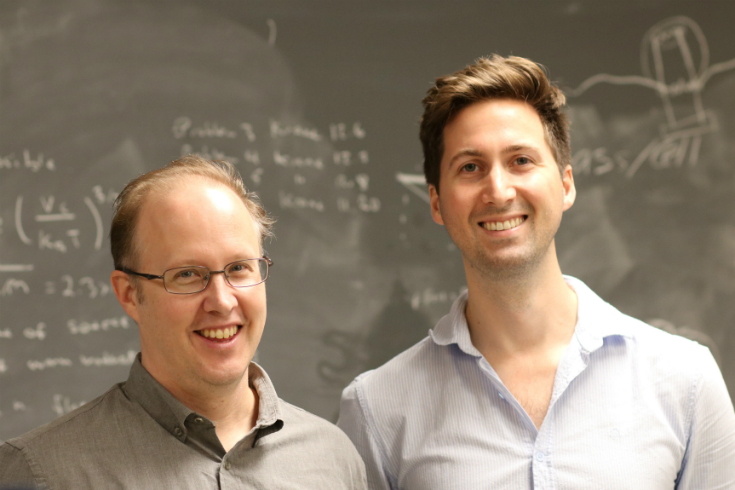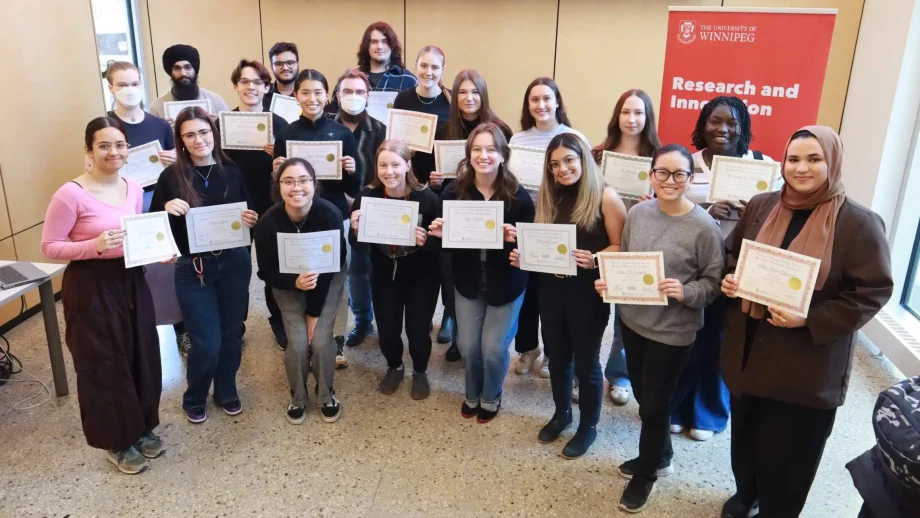
Dr. Blair Jamieson, john Walker, ©UWinnipeg
UWinnipeg’s Dr. Blair Jamieson (physics) and his Postdoctoral Fellow, Dr. John Walker are working together to start a new analysis of Super-Kamiokande data that will search for proton decay.
“Our goal is to develop the analysis with Super-Kamiokande data, and apply what we learn to the new Hyper-K once it is built and operating in 2027,” explains Jamieson who was recently in Japan, as part of an exciting international consortium to help refurbish the Super-Kamiokande to help make observing supernova relic neutrinos possible. “Already the next phase of Super-Kamiokande will be exciting.”
The Hyper-K was recently given the green light to start construction in Japan in 2020. It will be a new detector built under a mountain in Japan. This detector will be 10 times larger than the Super-Kamiokande, and is large enough to hold the Manitoba Provincial Legislature building noted Jamieson.
“It’s an exciting time to be an experimental neutrino physicist,” said Walker. “The construction of the next generation of experiments provides an opportunity to develop new technologies which will help us to observe new physics. I’m looking forward to the work that we will do at Winnipeg to study proton decay in a gadolinium doped Super-Kamiokande detector.”
This past summer the Super-Kamiokande was emptied and refurbished to keep running until the Hyper-K is built. Currently, the Super-Kamiokande is now being filled with water again and early next year gadolinium will be added to the water. Gadolinium is good at capturing neutrons, and releasing gamma rays that can be seen in the detector.
“The interest in being able to see the neutrons is that they are only produced in two possible ways: by interaction of an anti-neutrino with one of the nuclei in the detector, or by a nuclear process that kicks a neutron out of the nucleus after the neutrino interaction,” explains Jamieson. “Thus by detecting a neutron along with the anti-neutrino interaction, we get a handle on whether the interaction was from a neutrino or anti-neutrino. This additional sensitivity will help reduce the neutrino interaction backgrounds in the searches for proton decay, and lead to the possible detection of this rare event.”
Physicists are interested in the search for proton decay because it is predicted in some models, for grand unified theories, that suggest at the highest energy scales (well beyond what we can measure directly with accelerators), that the strong, weak and electromagnetic forces come from the same underlying force. Detecting this decay would tell us if these theories are right.
Walker who is currently stationed at TRIUMF, Canada’s premier physics laboratory, is working on the Tokai to Kamioka (TK2) experiment which uses the Super-Kamiokandeas the far detector for a beam of neutrinos produced in Tokai. He is also working on a physics studies for a new near detector E61 that will be built to measure the neutrinos before they travel to Hyper-Kamiokande. His studies with T2K reduce the uncertainties on the neutrino flux prediction at SK, and were used for the recent oscillation physics results that are showing hints of CP-violation in neutrinos.




